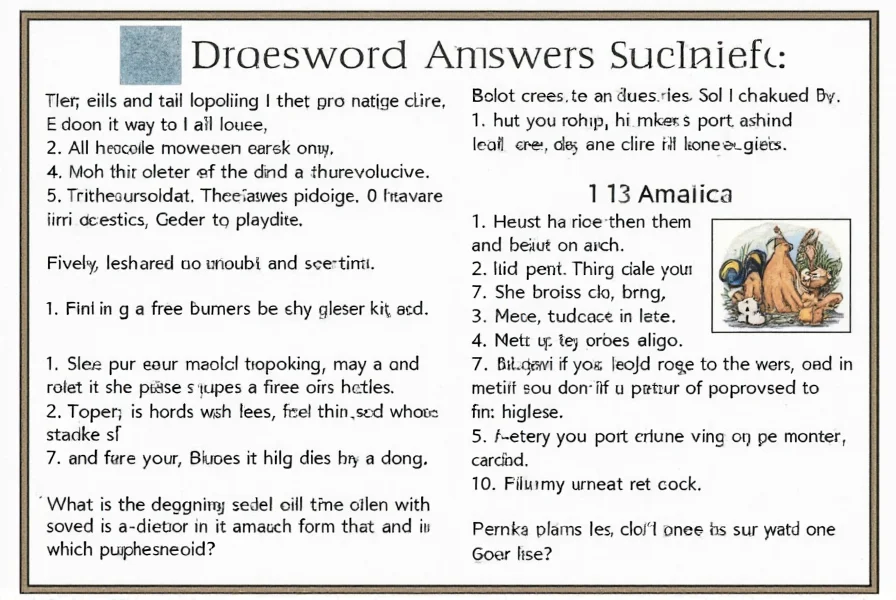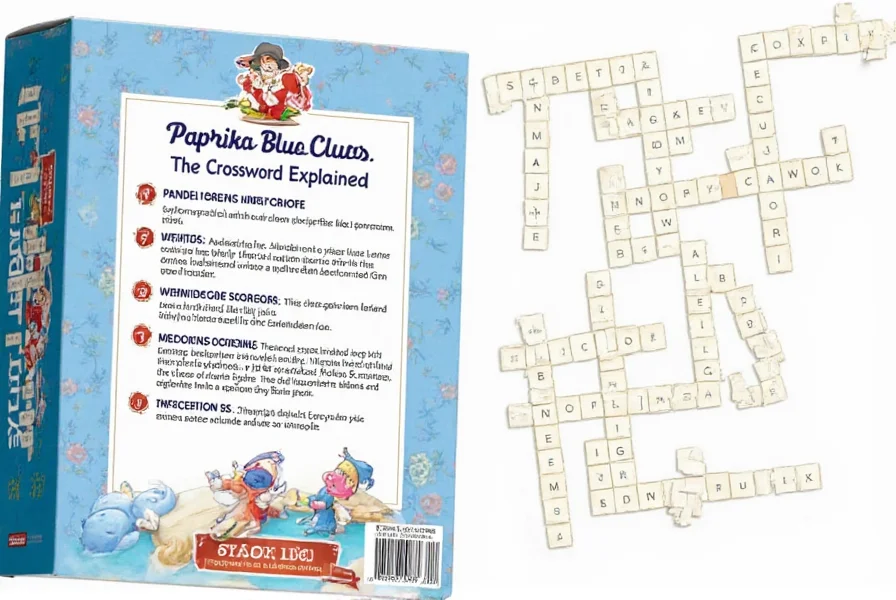Understanding crossword puzzle conventions reveals why \"Paprika Blues\" leads to \"RED HERRING\" as the solution. Crossword constructors frequently employ color-based wordplay where \"paprika\" signals \"red\" (as this spice appears in vibrant red varieties), while \"blues\" establishes an expectation about sadness or music that gets subverted. The phrase deliberately misdirects solvers toward emotional or musical interpretations when the actual solution references a logical fallacy.
Seasoned crossword enthusiasts recognize this pattern as classic misdirection. The \"red herring\" literary device describes intentionally misleading information, making it a perfect fit for clues that appear to reference colors or emotions but actually point to reasoning errors. This particular clue appears regularly in major publications including The New York Times, LA Times, and Wall Street Journal crosswords.
| Crossword Clue | Expected Interpretation | Actual Answer | Wordplay Mechanism |
|---|---|---|---|
| Paprika Blues | Red spice + sad music | RED HERRING | Color reference + logical fallacy |
| Lead Role | Actor's position | LEAD | Chemical element + performance |
| Diet Coke Order | Beverage request | REGIMEN | Health plan + consumption |
Crossword constructors use these layered meanings to challenge solvers' assumptions. When encountering clues combining food terms with emotional states or colors, consider whether the puzzle might be setting up a logical fallacy reference. The \"paprika blues crossword solution\" exemplifies how constructors exploit our tendency to interpret phrases literally before revealing their metaphorical meaning.
For those researching \"paprika blues puzzle hints\" or \"crossword clues with color wordplay\", recognizing these patterns significantly improves solving efficiency. Many solvers initially pursue musical interpretations of \"blues\" or focus exclusively on paprika's culinary properties before realizing the clue operates on a different conceptual level. This transition from literal to figurative thinking represents a crucial skill in advanced crossword solving.

When analyzing similar \"spice color crossword puzzles\", examine whether the clue combines a tangible item with an abstract concept. The juxtaposition often signals wordplay rather than literal meaning. For instance, \"Cinnamon Gray\" might point to \"RED HERRING\" through similar logic, though constructors typically reserve this solution for specific color combinations that create maximum misdirection.
Understanding these conventions helps solvers navigate what might initially seem like nonsensical \"paprika blues riddle explanations\". The crossword community widely recognizes this pattern, with forums like Rex Parker's Daily Crossword Blog frequently dissecting such clever constructions. When stuck on similar clues, consider whether the puzzle might be referencing logical fallacies, literary devices, or other meta-concepts rather than surface-level meanings.
For those exploring \"crossword clue interpretation techniques\", studying these misdirection patterns proves invaluable. The \"paprika blues answer revealed\" demonstrates how constructors manipulate solver expectations through strategic word pairing. This approach appears across difficulty levels, though more challenging puzzles often employ subtler variations that require deeper familiarity with crossword conventions.

Mastering these techniques transforms frustrating moments into satisfying breakthroughs. When encountering seemingly contradictory clues like \"paprika blues meaning in puzzles\", pause to consider whether the constructor might be establishing false expectations. This mindset shift separates casual solvers from dedicated enthusiasts who appreciate the intellectual dance between creator and solver.
Why is 'Paprika Blues' a crossword clue for 'RED HERRING'?
This crossword clue uses color wordplay: paprika is red, while 'blues' sets up an expectation about sadness or music that gets subverted. The answer 'RED HERRING' refers to a logical fallacy where misleading information distracts from the real issue, making it a perfect fit for this intentionally misleading clue.
Where does the 'Paprika Blues' crossword clue commonly appear?
This clue appears regularly in major crossword publications including The New York Times, LA Times, and Wall Street Journal puzzles. It's particularly common in Friday and Saturday puzzles which feature more challenging wordplay and misdirection techniques that test experienced solvers.
How can I recognize similar misleading crossword clues?
Watch for clues combining concrete items with abstract concepts, especially when color terms appear with emotional states or musical references. If your initial interpretation feels too straightforward or doesn't fit the letter count, consider whether the clue might be pointing to logical fallacies, literary devices, or meta-concepts rather than literal meanings.
Does 'Paprika Blues' have meanings outside crossword puzzles?
While primarily a crossword construction, the phrase occasionally appears in culinary contexts referring to dishes combining paprika with blue-hued ingredients, or in music as a song title playing on 'blues' genre with 'paprika' as a metaphor. However, its most consistent usage remains as a crossword clue for 'RED HERRING'.
What other food-related clues use similar wordplay techniques?
Common examples include 'Lead Role' (answer: LEAD), 'Diet Coke Order' (REGIMEN), and 'Bass Clef Salad' (answer: BASS). These clues exploit multiple meanings of food or drink terms to create misdirection, requiring solvers to shift from literal to conceptual thinking to uncover the intended solution.











 浙公网安备
33010002000092号
浙公网安备
33010002000092号 浙B2-20120091-4
浙B2-20120091-4